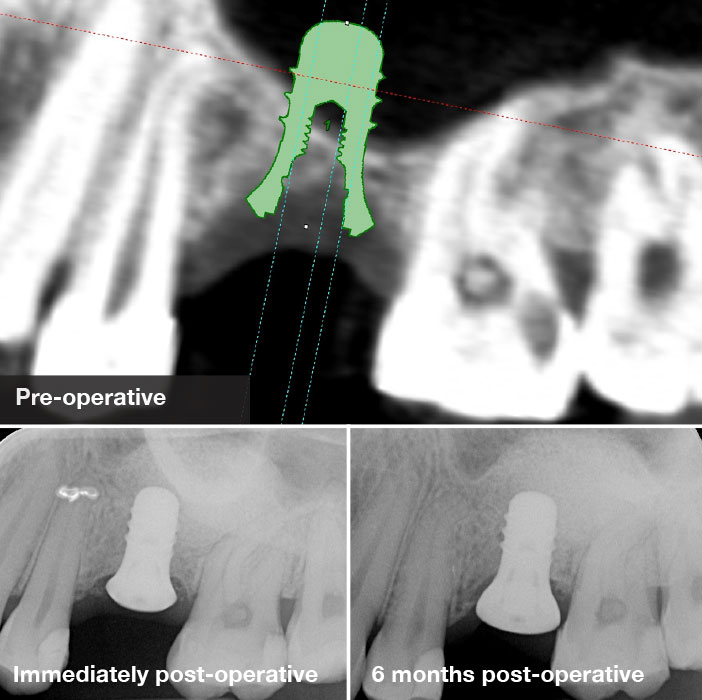Sinus Augmentation
Periodontal Case Study
Lateral window sinus floor elevation with simultaneous implant placement
A low and sloping floor of the maxillary sinus may complicate implant placement. Such a scenario may result in insufficient bone height as well as an increased risk of membrane perforation. Sinus floor elevation via a lateral window approach is the conventional technique to solve this problem. When carried out with minimally invasive surgical technique, as well as the use of piezosurgery, it can be performed in a safe and predictable manner.
The case above describes implant placement to replace a missing upper left molar. Radiographic assessment revealed a low sloping floor of the maxillary sinus. The sub-antral bone height was 3-5mm. The surgical procedure involved utilising a piezosurgical device to carry out the antrostomy. The elevation of the schneiderian membrane was facilitated by specially designed piezosurgical tips. The grafting material used was a combination of autogenous bone scrapings and xenograft (Bio-Oss). An implant was then placed at the same appointment. Radiographic follow up shows excellent integration of the implant and grafted bone.

